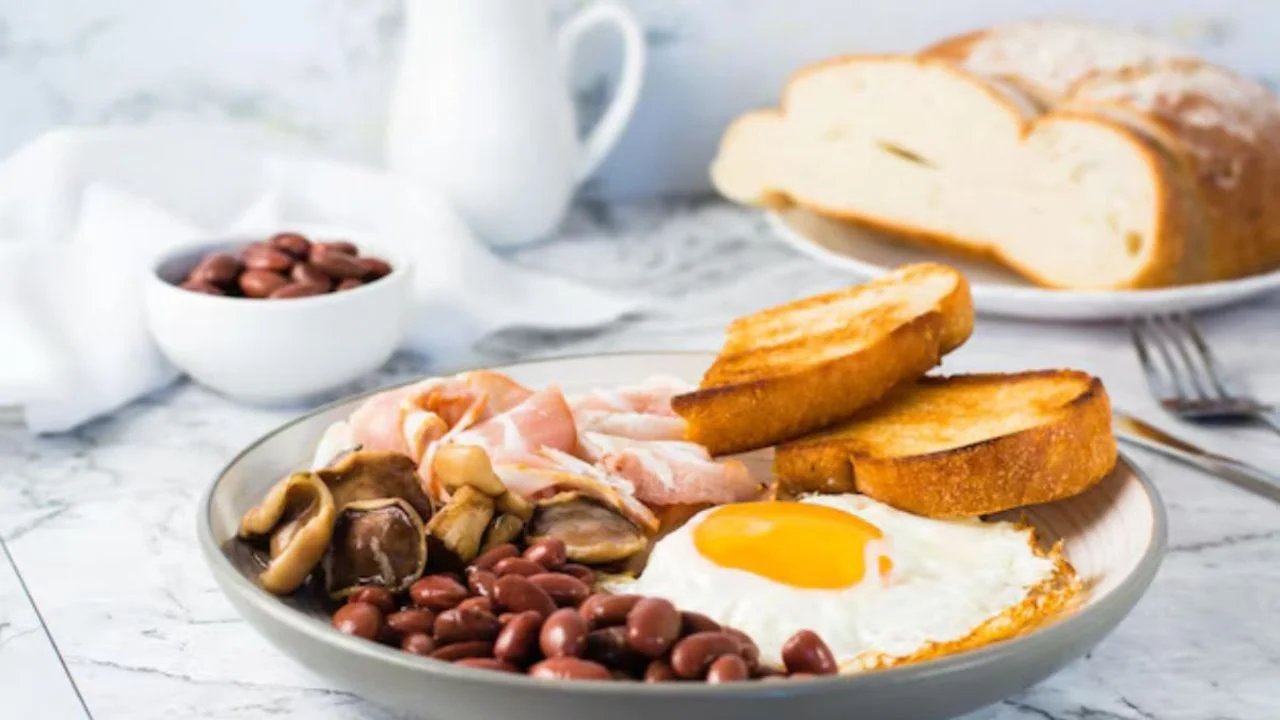Toast. The humble slice of bread that has been our breakfast companion for centuries. But have you ever stopped to think about what happens when this everyday staple gets a cultural makeover? Enter Toastul — a concept that transforms ordinary toast into an extraordinary culinary experience. It’s not just a dish anymore; it’s an entire movement celebrating creativity, comfort, and global flavor.
1. What Exactly Is Toastul?
Toastul can be best described as “the elevation of toast from simplicity to sophistication.” The word itself, which has Romanian roots meaning “the toast,” carries an air of tradition. Yet, the concept has evolved into something far more modern and universal.
Imagine a perfectly crisped slice of bread — golden, warm, and slightly buttery — now dressed in layers of flavor: smashed avocado, sautéed mushrooms, spicy chili oil, or even grilled shrimp. That’s the spirit of Toastul cuisine — simple ingredients transformed through imagination.
Unlike traditional toast, which is often rushed and repetitive, Toastul embraces mindfulness. Every layer, every topping, and every crunch is meant to be savored. It’s food that speaks the language of both comfort and creativity.
2. The Origins of Toastul: Where Bread Meets Art
The origins of Toastul lie at the intersection of necessity and innovation. In Romanian households, toast (or “toastul”) became a daily comfort — an easy, affordable dish that warmed hearts during cold mornings. Over time, this ordinary food item began to evolve. People started adding unique toppings, blending textures and tastes, turning something simple into something expressive.
By the mid-2010s, food bloggers and home cooks around the world began catching on. The rise of Instagram and TikTok turned the art of plating into a global trend, and suddenly, toast was no longer just toast. It was a blank canvas for edible art — and Toastul became its new name.
From Europe to Asia, the idea spread like melted butter. Countries began fusing local ingredients with the Toastul concept:
- Japan introduced matcha-infused butter and red bean spreads.
- Italy layered bruschetta-style toppings — tomato, basil, olive oil — but with a modern Toastul twist.
- Turkey added kaymak (clotted cream) and honey, making it an elegant breakfast indulgence.
- Pakistan and India joined in with spicy keema and chutney-based Toastul variations.
The result? A worldwide appreciation for a dish that had previously been overlooked.
3. The Philosophy Behind Toastul Cuisine
At its heart, Toastul is about balance — between minimalism and indulgence. You don’t need expensive ingredients or fancy gadgets. What you need is intention and creativity.
Toastul invites you to slow down and look at food differently. The philosophy can be broken into three principles:
- Simplicity: Start with the basics — quality bread, good butter, and a clear idea of flavor direction.
- Expression: Let the toppings tell your story. A slice of life reflected in what you put on your slice of bread.
- Connection: Toastul isn’t just about eating; it’s about sharing — a communal act that brings people together.
Just like latte art turned coffee into an experience, Toastul turns breakfast into an expression of art and personality.
4. Types of Toastul Creations
Toastul comes in countless variations. Here are a few broad categories that capture its diversity:
a. Classic Comfort Toastul
The foundation of all toast art — simple combinations done perfectly. Think:
- Butter and honey drizzles
- Cinnamon sugar and butter
- Jam and cream cheese
- Melted cheddar and cracked pepper
These versions pay homage to traditional breakfast flavors.
b. Savory Gourmet Toastul
A playground for chefs and home cooks who like to push boundaries:
- Smoked salmon, cream cheese, and dill
- Smashed avocado, chili flakes, and poached egg
- Grilled mushrooms with truffle oil
- Shrimp Toastul with crispy garlic
Savory Toastul is all about layering umami, texture, and aroma.
c. Sweet & Decadent Toastul
Perfect for dessert lovers or brunch indulgence:
- Nutella and banana slices
- Whipped ricotta with fresh figs
- Toasted brioche with caramel drizzle
- Strawberry jam topped with edible flowers
Sweet Toastul feels like a treat that you don’t have to feel guilty about.
d. Fusion Toastul
This is where creativity really shines — blending culinary traditions:
- Korean kimchi and fried egg on sourdough
- Mediterranean hummus and roasted veggies
- Mexican-inspired Toastul with guacamole and salsa
- Desi Toastul: spiced potatoes and coriander chutney
Each bite tells a cross-cultural story.
5. The Rise of the Toastul Trend
Why has Toastul become such a sensation? Because it perfectly fits the needs of our fast-paced but experience-hungry generation.
In an era where time is limited but aesthetic matters, Toastul hits the sweet spot:
- It’s quick to prepare.
- It’s healthy when balanced with the right ingredients.
- It’s visually appealing, perfect for food photography.
- It’s affordable, yet feels premium.
Social media played a massive role in the rise of Toastul. Influencers began experimenting with toast as a canvas for color and creativity — fruits, herbs, sauces, and drizzles turned breakfast into art. Soon, entire cafés were dedicated to Toastul-style menus, offering everything from “Breakfast Picasso” to “Avocado Abstract.”
6. Toastul Around the World
Every culture has its own version of Toastul — even if it goes by another name.
- France: Crostini and tartines — elegant open-faced toasts served with butter, jam, or meats.
- Italy: Bruschetta — the ancestor of Toastul, featuring rustic bread rubbed with garlic and olive oil.
- Japan: Thick shokupan bread with whipped cream or matcha spread.
- India: Masala toast — a spicy street-style version.
- Mexico: Toastul de Frijoles — toast with beans, cheese, and salsa.
What’s unique about the modern Toastul movement is that it merges all these traditions into one cohesive concept — a celebration of how a single piece of bread can carry the identity of an entire culture.
7. The Science of the Perfect Toastul
You might think toast is simple, but there’s actual science behind that satisfying crunch.
Heat caramelizes the sugars in bread through a process called the Maillard reaction, creating that signature golden color and complex aroma. The ideal toast should have a crisp exterior and a soft, warm interior.
The choice of bread also matters.
- Sourdough adds tanginess.
- Whole grain brings depth and texture.
- Brioche gives sweetness and softness.
- Rye adds an earthy undertone.
Once toasted, the bread becomes a perfect base — sturdy enough to hold toppings but tender enough to bite into. Add the right spreads and finishes, and you’ve got the ideal Toastul experience.
8. How to Make the Perfect Toastul at Home
Making Toastul is an art, but you don’t need to be a chef. Follow this guide to craft your own masterpiece:
- Choose the Bread Wisely: Go for a high-quality loaf that complements your flavor profile.
- Toast with Purpose: Light toast for delicate toppings, darker for bold ingredients.
- Layer Thoughtfully: Start with spreads (butter, hummus, cheese), then add solid toppings.
- Play with Contrast: Combine textures — creamy with crunchy, sweet with savory.
- Finish Strong: Add garnishes — herbs, seeds, spices, or drizzle sauces.
Remember, presentation matters. A Toastul plate isn’t complete until it looks like something you’d photograph.
9. Toastul as a Lifestyle
Toastul isn’t only about food — it’s a mindset. It represents creativity, individuality, and mindfulness. Preparing Toastul allows you to express emotion and culture in a simple, personal way.
For many, it has even become a ritual — a morning meditation through flavor. The act of toasting, spreading, and plating provides a sense of calm and control before facing the day.
It’s also sustainable. Since it relies on basic, accessible ingredients, it minimizes waste. You can use leftover bread and repurpose small amounts of toppings that might otherwise go unused.
10. The Future of Toastul
The future of Toastul looks bright — and crispy.
Food experts predict that Toastul will continue evolving into new territories. We may soon see:
- AI-generated Toastul recipes tailored to personal tastes.
- Plant-based and gluten-free breads becoming the default base.
- Global pop-up Toastul bars, serving experimental toast creations.
- Edible art competitions, where Toastul becomes a creative showcase.
As the culinary world becomes more experimental, Toastul serves as a reminder that innovation doesn’t always mean complexity. Sometimes, greatness is as simple as a slice of bread transformed with passion.
11. Toastul and Wellness
Beyond aesthetics, Toastul plays a role in personal wellness. It encourages mindful eating — taking time to appreciate textures, aromas, and tastes rather than rushing through meals.
When prepared with whole grains, fresh produce, and healthy fats, Toastul can support:
- Digestive health through fiber-rich bread.
- Energy levels from complex carbs.
- Mental focus through nutrient-dense toppings like eggs, avocado, or nuts.
Even indulgent Toastul versions (like Nutella or caramel) can serve as emotional comfort food — a reminder that wellness includes pleasure too.
12. Cultural Symbolism of Toastul
At its core, Toastul embodies connection. From European cafés to Pakistani kitchens, it bridges gaps between generations, cultures, and lifestyles.
It’s the perfect example of how food evolves — simple, universal, yet infinitely customizable. Toastul represents the new global table: diverse, inclusive, and full of personality.
In many ways, it’s symbolic of how the world eats today — blending tradition with modern creativity.
Conclusion
In the grand world of gastronomy, Toastul might appear modest — just a slice of bread adorned with a few toppings. But beneath its simplicity lies a revolution. It celebrates creativity, culture, and connection in the most accessible form.
From Romanian kitchens to international food blogs, Toastul has captured hearts (and stomachs) worldwide. It’s proof that culinary innovation doesn’t always demand complexity — sometimes it’s just about looking at the familiar with fresh eyes.
So next time you toast a slice of bread, don’t think of it as breakfast. Think of it as a blank canvas waiting for your imagination. Because with Toastul, the possibilities are as endless as the flavors you dream up.
FAQs
1. What does “Toastul” mean?
“Toastul” originates from the Romanian word for “the toast,” representing both a dish and a broader style of toast-based cuisine.
2. Is Toastul only a breakfast food?
Not at all. Toastul can be enjoyed any time of day — breakfast, lunch, dinner, or even dessert.
3. What makes Toastul different from regular toast?
Toastul focuses on creative, gourmet combinations, turning simple toast into an elevated, artful experience.
4. Can I make Toastul without fancy ingredients?
Absolutely! The beauty of Toastul lies in its simplicity. Even butter and herbs can create a delicious Toastul dish.
5. Is Toastul healthy?
It can be very healthy, depending on your toppings and bread choice. Whole grains, vegetables, and lean proteins make for a balanced Toastul meal.

